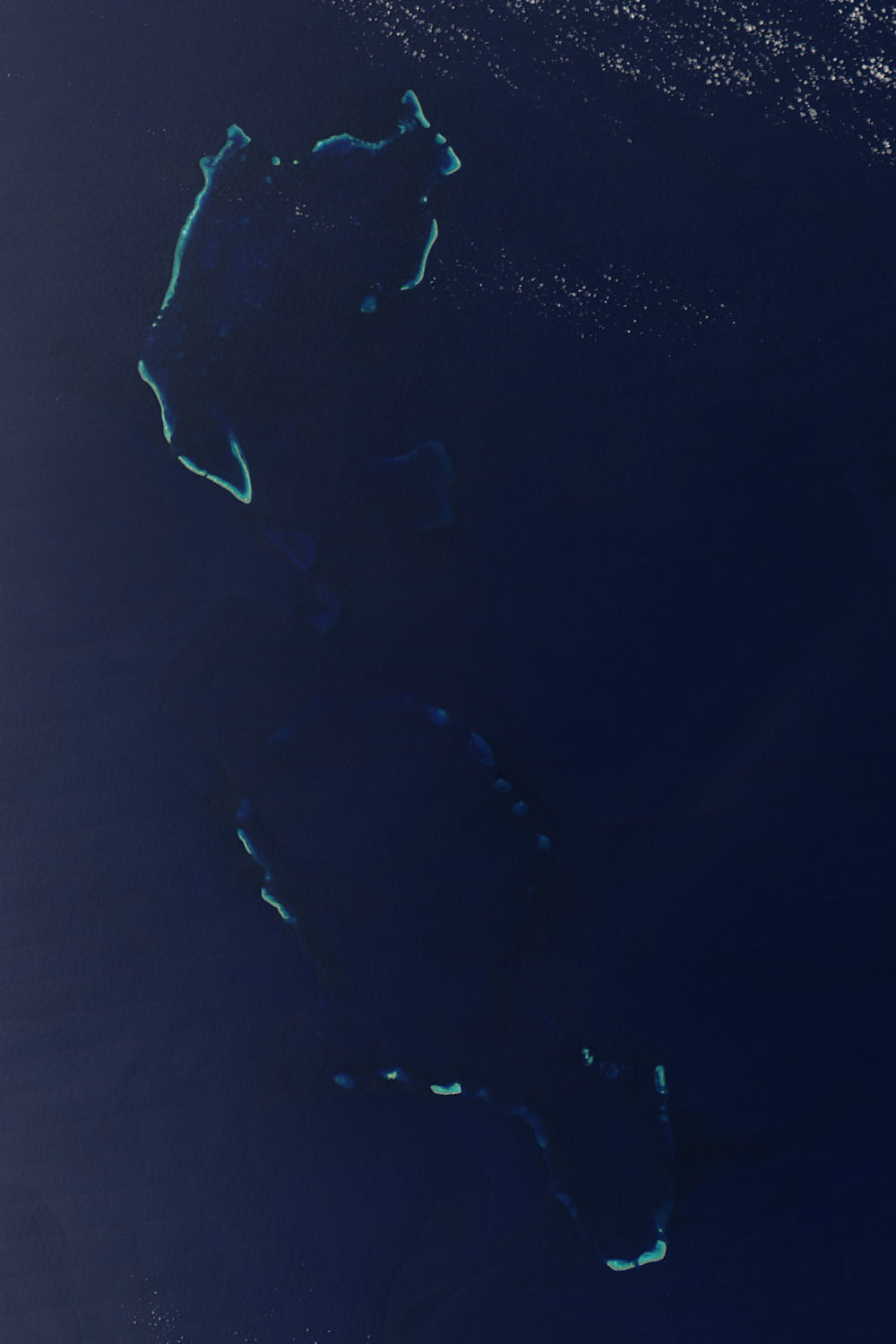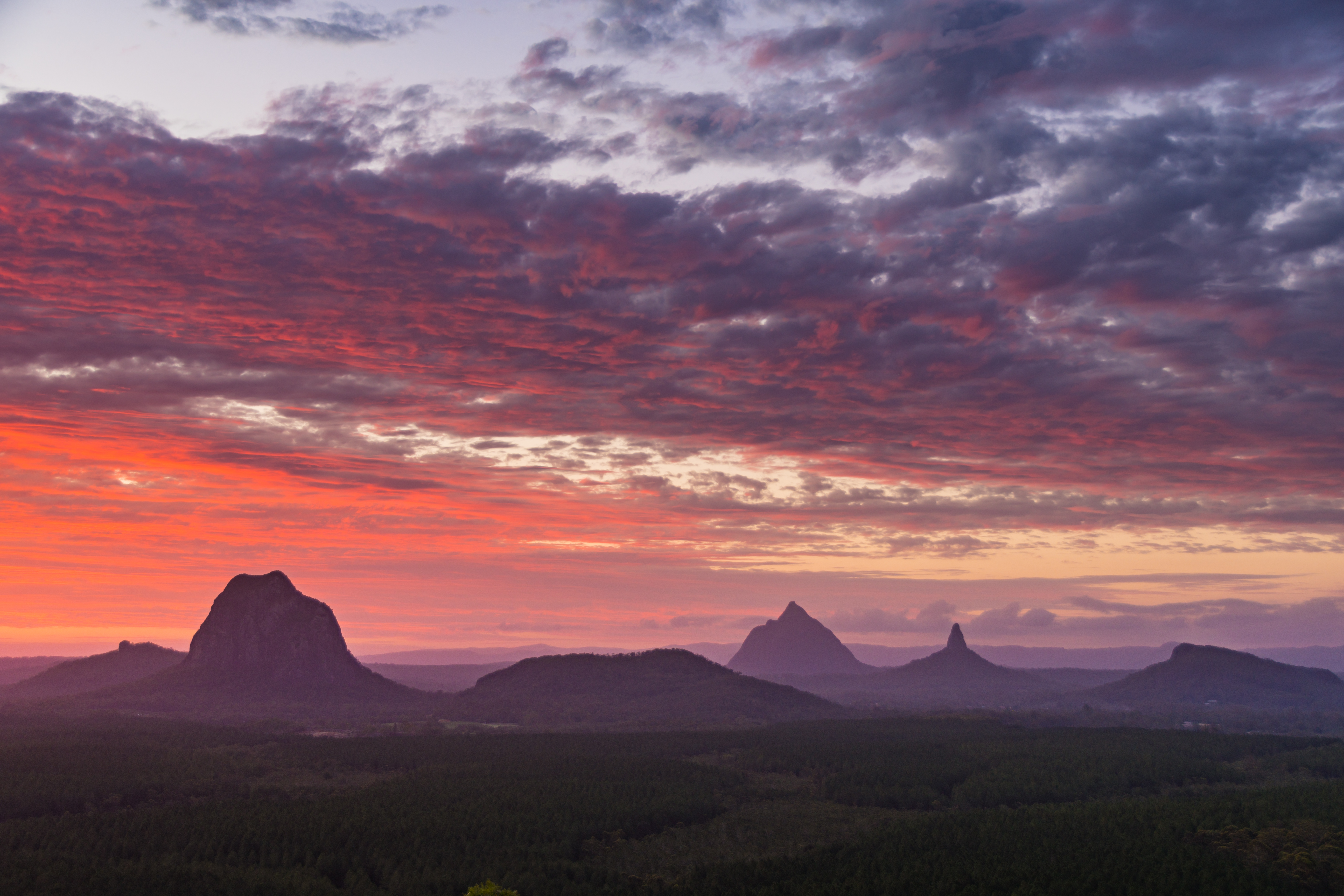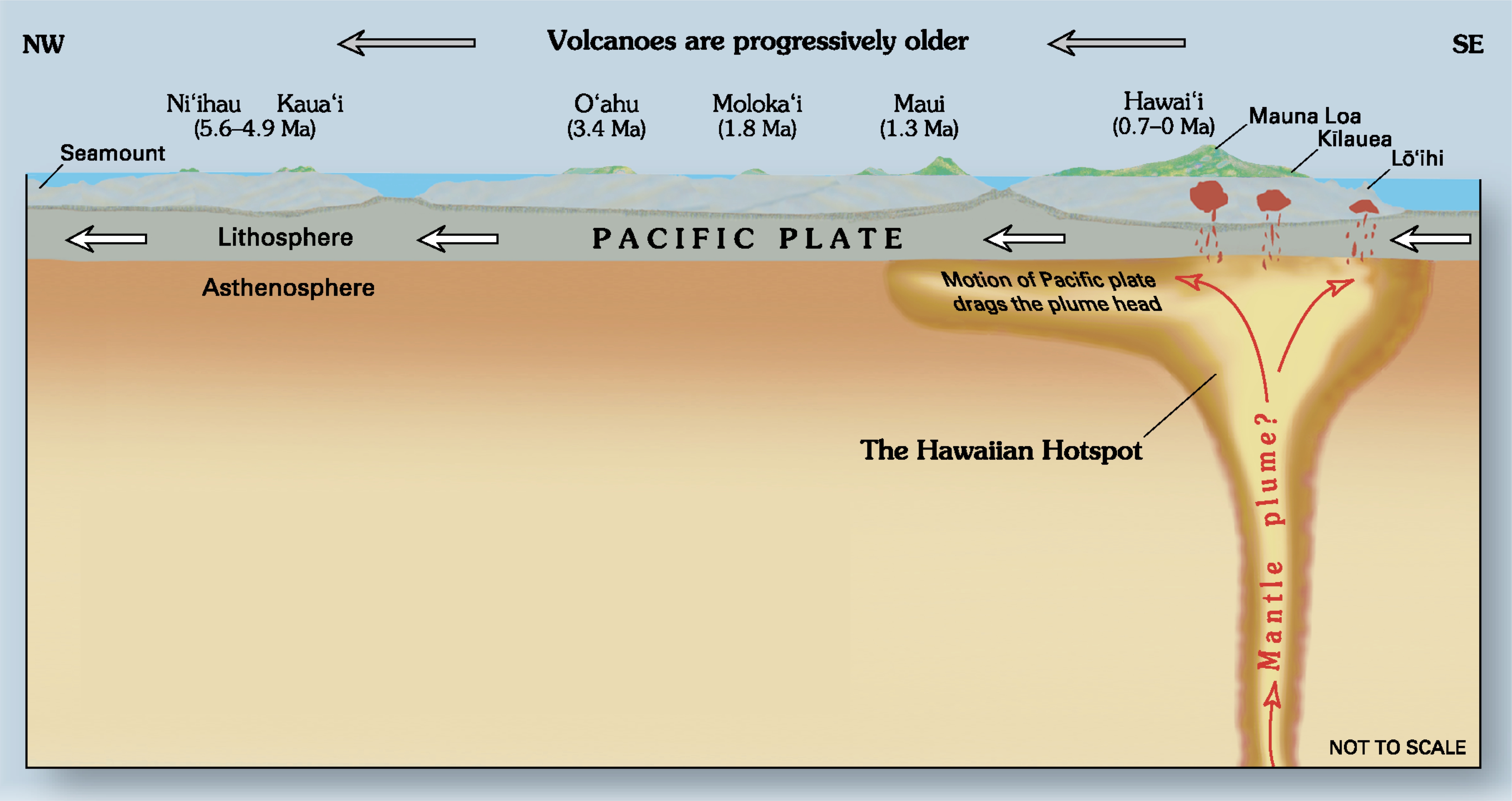|
Lord Howe Seamount Chain
The Lord Howe Seamount Chain formed during the Miocene. It features many coral-capped guyots and is one of the two parallel seamount chains alongside the east coast of Australia; the Lord Howe and Tasmantid seamount chains both run north-south through parts of the Coral Sea and Tasman Sea.Willem J. M. van der Linden, Morphology of the Tasman sea floor'. New Zealand Journal of Geology and Geophysics. Vol.13 (1970) 282-291. These chains have longitudes of approximately 159°E and 156°E respectively. Geography The Lord Howe Seamount Chain has been known under a variety of different gazetted names, including the Lord Howe Seamounts, Lord Howe Guyots, Lord Howe Rise Guyots and the Middleton Chain. The Lord Howe Seamount Chain is on the western slope of Lord Howe Rise, a deep-sea elevated plateau which is a submerged part of Zealandia. The Tasmantid and Lord Howe seamount chains are both broadly within the Tasman basin (the abyssal plain between Lord Howe Rise and the Austral ... [...More Info...] [...Related Items...] OR: [Wikipedia] [Google] [Baidu] |
Coral Sea
The Coral Sea () is a marginal sea of the South Pacific off the northeast coast of Australia, and classified as an interim Australian bioregion. The Coral Sea extends down the Australian northeast coast. Most of it is protected by the French Natural Park of the Coral Sea (french: Parc Naturel de la Mer de Corail) and the Australian Coral Sea Marine Park. The sea was the location for the Battle of the Coral Sea, a major confrontation during World War II between the navies of the Empire of Japan, and the United States and Australia. The sea contains numerous islands and reefs, as well as the world's largest reef system, the Great Barrier Reef (GBR), which was declared a World Heritage Site by UNESCO in 1981. All previous oil exploration projects were terminated at the GBR in 1975, and fishing is restricted in many areas. The reefs and islands of the Coral Sea are particularly rich in birds and aquatic life and are a popular tourist destination, both domestically and inter ... [...More Info...] [...Related Items...] OR: [Wikipedia] [Google] [Baidu] |
Chesterfield Group
The Chesterfield Islands (''îles Chesterfield'' in French) are a French archipelago of New Caledonia located in the Coral Sea, northwest of Grande Terre, the main island of New Caledonia. The archipelago is 120 km long and 70 km broad, made up of 11 uninhabited islets and many reefs. The land area of the islands is less than 10 km2. During periods of lowered sea level during the Pleistocene ice ages, an island of considerable size (Greater Chesterfield Island) occupied the location of the archipelago. Bellona Reef, 164 km south-southeast of Chesterfield, is geologically separated from the Chesterfield archipelago but commonly included. Etymology The reef complex is named after the whaling ship , commanded by Matthew Bowes Alt, which sailed through the Coral Sea in the 1790s. Location The Chesterfield Islands, sometimes referred to as the ''Chesterfield Reefs'' or ''Chesterfield Group'', are the most important of a number of uninhabited coral sand c ... [...More Info...] [...Related Items...] OR: [Wikipedia] [Google] [Baidu] |
Hotspot Tracks
Hotspot, Hot Spot or Hot spot may refer to: Places * Hot Spot, Kentucky, a community in the United States Arts, entertainment, and media Fictional entities * Hot Spot (comics), a name for the DC Comics character Isaiah Crockett * Hot Spot (Transformers), any of several characters Films * ''Hot Spot'' (1941 film), later retitled ''I Wake Up Screaming'' * ''Hot Spot'' (1945 film), a Private Snafu film * ''The Hot Spot'', a 1990 neo-noir film Other uses in arts, entertainment, and media * ''Hot Spot'' (board game), a 1979 board game published by Metagaming Concepts * "Hot Spot" (''Burn Notice''), a television episode * ''Hot Spot'' (musical), 1963 * "Hot Spot" (song), by Foxy Brown * ''Hotspot'' (album), a 2020 album by Pet Shop Boys * ''The Hot Spot'' (Podcast), a GameSpot podcast Computing * Hot spot (computer programming), a compute-intensive region of a program * Hot spot, an area which is customizable by users in software frameworks * Hotspot (Wi-Fi), a wireless n ... [...More Info...] [...Related Items...] OR: [Wikipedia] [Google] [Baidu] |
Seamount Chains
A seamount is a large geologic landform that rises from the ocean floor that does not reach to the water's surface (sea level), and thus is not an island, islet or cliff-rock. Seamounts are typically formed from extinct volcanoes that rise abruptly and are usually found rising from the seafloor to in height. They are defined by oceanographers as independent features that rise to at least above the seafloor, characteristically of conical form.IHO, 2008. Standardization of Undersea Feature Names: Guidelines Proposal form Terminology, 4th ed. International Hydrographic Organization and Intergovernmental Oceanographic Commission, Monaco. The peaks are often found hundreds to thousands of meters below the surface, and are therefore considered to be within the deep sea. During their evolution over geologic time, the largest seamounts may reach the sea surface where wave action erodes the summit to form a flat surface. After they have subsided and sunk below the sea surface such flat ... [...More Info...] [...Related Items...] OR: [Wikipedia] [Google] [Baidu] |
Gifford Marine Park
Gifford Marine Park is an Australian marine park located 700 km (435 mi) east of Brisbane, Queensland. Part of the Temperate East Marine Park Network, it protects 5,828 km2 (2,250 sq mi) around two flat-topped seamounts, located in the Lord Howe Seamount Chain. One of the two seamounts, Gifford Guyot The Lord Howe Seamount Chain of which Gifford Guyot is an eruptive centre, and part of a pair of coral-capped guyots, formed during the Miocene. The Gifford Marine Park is co-located off the Queensland coast near Brisbane. Geology The Giffo ..., gives its name to the park. The Gifford Marine Park protects the habitat for humpback and sperm whales who may visit the seamounts for feeding, resting and breeding and also for navigation. The Gifford Marine Park has been designated a Habitat Protection Zone, IUCN Category IV. See also * Australian marine parks Gallery Images taken from Nanson et al (2018). References {{coord, 26, 46, S, 159, 26, E, type:landmark_region ... [...More Info...] [...Related Items...] OR: [Wikipedia] [Google] [Baidu] |
Lord Howe Marine Park
The Lord Howe Marine Park (formerly known as the Lord Howe Commonwealth Marine Reserve) is an Australian marine park located about offshore of New South Wales, near Lord Howe Island. The marine park covers an area of , encompassing the smaller Lord Howe Island Marine Park, and is assigned IUCN category IV. It is one of 8 parks managed under the Temperate East Marine Parks Network. Conservation values Species and habitat *Biologically important areas for protected humpback whales and a number of migratory seabirds. *A major seabird breeding area, with 14 species found on the islands including masked boobys, grey ternlets, red-tailed tropicbirds, black-winged petrels and Kermadec petrels *Key location for black cod *Due to the convergence of warmer northern tropical and cooler southern temperate waters in the area, many species found in the reserve are at the northern or southern extent of their range. Bioregions and ecology *Examples of the ecosystems of the Lord Howe Provi ... [...More Info...] [...Related Items...] OR: [Wikipedia] [Google] [Baidu] |
Glass House Mountains
The Glass House Mountains are a cluster of thirteen hills that rise abruptly from the coastal plain on the Sunshine Coast, Queensland, Australia. The highest hill is Mount Beerwah at 556 metres above sea level, but the most identifiable of all the hills is Mount Tibrogargan which from certain angles bears a resemblance to a face staring east towards the ocean. The Glass House Mountains are located near Beerburrum State Forest and Steve Irwin Way. From Brisbane, the mountains can be reached by following the Bruce Highway north and taking the Glass House Mountains tourist drive turn-off onto Steve Irwin Way. The trip is about one hour from Brisbane. The Volcanic peaks of the Glass House Mountains rise dramatically from the surrounding Sunshine Coast landscape. They were formed by intrusive plugs, remnants of volcanic activity that occurred 26–27 million years ago. Molten rock filled small vents or intruded as bodies beneath the surface and solidified into land rocks. Millions ... [...More Info...] [...Related Items...] OR: [Wikipedia] [Google] [Baidu] |
Hotspot (geology)
In geology, hotspots (or hot spots) are volcanic locales thought to be fed by underlying mantle that is anomalously hot compared with the surrounding mantle. Examples include the Hawaii, Iceland, and Yellowstone hotspots. A hotspot's position on the Earth's surface is independent of tectonic plate boundaries, and so hotspots may create a chain of volcanoes as the plates move above them. There are two hypotheses that attempt to explain their origins. One suggests that hotspots are due to mantle plumes that rise as thermal diapirs from the core–mantle boundary. The alternative plate theory is that the mantle source beneath a hotspot is not anomalously hot, rather the crust above is unusually weak or thin, so that lithospheric extension permits the passive rising of melt from shallow depths. Origin The origins of the concept of hotspots lie in the work of J. Tuzo Wilson, who postulated in 1963 that the formation of the Hawaiian Islands resulted from the slow movement of a ... [...More Info...] [...Related Items...] OR: [Wikipedia] [Google] [Baidu] |
Indo-Australian Plate
The Indo-Australian Plate is a major tectonic plate that includes the continent of Australia and the surrounding ocean and extends northwest to include the Indian subcontinent and the adjacent waters. It was formed by the fusion of the Indian and the Australian Plates approximately 43 million years ago. The fusion happened when the mid-ocean ridge in the Indian Ocean, which separated the two plates, ceased spreading. Regions India, Australia, New Guinea, Tasmania, New Zealand, and New Caledonia are all fragments of the ancient supercontinent of Gondwana. As the ocean floor broke apart, these land masses fragmented from one another, and for a time these centers were thought to be dormant and fused into a single plate. However, research in the early 21st century indicates plate separation of the Indo-Australian Plate may have already occurred. Characteristics The eastern side of the plate is the convergent boundary with the Pacific plate. The Pacific plate sinks below the Aus ... [...More Info...] [...Related Items...] OR: [Wikipedia] [Google] [Baidu] |
Ball's Pyramid
Ball's Pyramid is an erosional remnant of a shield volcano and caldera lying southeast of Lord Howe Island in the Pacific Ocean. It is high, while measuring in length and only across, making it the tallest volcanic stack in the world. Ball's Pyramid is part of the Lord Howe Island Marine Park in Australia and is over northeast of Sydney, New South Wales. Steep, eroded, and formed 6.4 million years ago, Ball's Pyramid is positioned in the centre of a submarine shelf and is surrounded by rough seas, making any approach difficult. History Discovery The pyramid is named after Royal Navy Lieutenant Henry Lidgbird Ball, who reported discovering it in 1788. On the same voyage, Ball also reported discovering Lord Howe Island. In ''The Voyage of Governor Phillip to Botany Bay with an Account of the Establishment of the Colonies of Port Jackson and Norfolk Island'' (1789), Arthur Phillip gives this description of the area around Ball's Pyramid.. before describing Lord ... [...More Info...] [...Related Items...] OR: [Wikipedia] [Google] [Baidu] |
Lord Howe Island
Lord Howe Island (; formerly Lord Howe's Island) is an irregularly crescent-shaped volcanic remnant in the Tasman Sea between Australia and New Zealand, part of the Australian state of New South Wales. It lies directly east of mainland Port Macquarie, northeast of Sydney, and about southwest of Norfolk Island. It is about long and between wide with an area of , though just of that comprise the low-lying developed part of the island. Along the west coast is a sandy semi-enclosed sheltered coral reef lagoon. Most of the population lives in the north, while the south is dominated by forested hills rising to the highest point on the island, Mount Gower (). The Lord Howe Island Group comprises 28 islands, islets, and rocks. Apart from Lord Howe Island itself, the most notable of these is the volcanic and uninhabited Ball's Pyramid about to the southeast of Howe. To the north lies a cluster of seven small uninhabited islands called the Admiralty Group. The first reporte ... [...More Info...] [...Related Items...] OR: [Wikipedia] [Google] [Baidu] |







